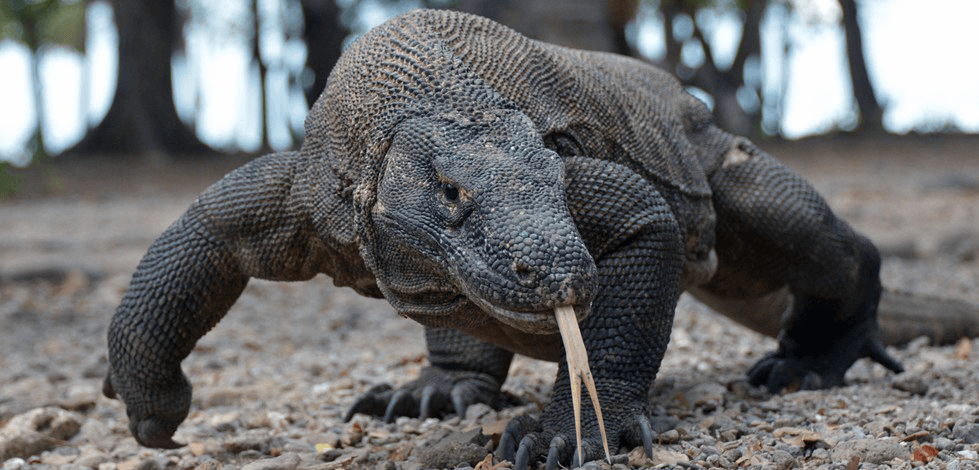Varanus komodoensis
Fast Facts
- Komodo dragons are the largest living species of lizard with the largest individual measuring 10 feet and weighing over 300 pounds.
- Young Komodos spend most of their time in trees as they are still vulnerable to predators. They typically start spending all their time on the ground when they are about 4 years old.
- They can smell food 2-6 miles away!
- They can digest and swallow skin, hair, bones, horns, and hooves of their prey.
- Komodo dragons were only recently discovered to be venomous.
- Though they cannot run fast for long, they have been known to reach speeds of 13 miles per hour.



Habitat
Grasslands, open savannah forests, beaches, and mountain forests

Size
7-9 feet in length and 120-200 pounds

Nutrition
Carrion, insects, reptiles, birds, and mammals
Characteristics
Adult Komodo dragons are large, stocky lizards with coffin-shaped heads, strong tails, and thick legs. Their color tends to be yellow-brown or reddish-brown, with darker head and legs, and lighter yellow around the eyes. They have long, snake-like tongues that frequently stick out to help them smell. Young Komodo dragons are born with yellow, green, or reddish spots and stripes over a darker body. Young Komodo dragons take a few years to gain their adult coloration and typically reach their full size in 5 to 7 years.
Behavior
Like most reptiles, Komodo dragons spend most of their day basking in the sun or finding shade from the extreme heat. They can make their own shelter by digging large dens into the ground. When hunting, Komodo dragons use their long, forked tongues to find food. Komodo dragons use their powerful jaws to bite their prey, then shake the prey back and forth. If the prey escapes, the Komodo dragon will follow the prey with its keen sense of smell. Over time, the anti-coagulant venom causes the animal to bleed out, become infected, or go into shock.
Reproduction
Komodo dragons become sexually mature around 8 to 9 years old. Mating occurs from May-August during the dry season. Males will fight with other males to breed with females. They stand on two legs, using their tails as a brace, and will wrestle each other until the losing dragon submits or is knocked over. After mating, females may delay egg fertilization depending on the severity of the dry season. Once conditions are right, 20-40 eggs are laid into a hole dug by the female or in the remains of an abandoned bird’s nest. Eggs hatch after 8 months.


